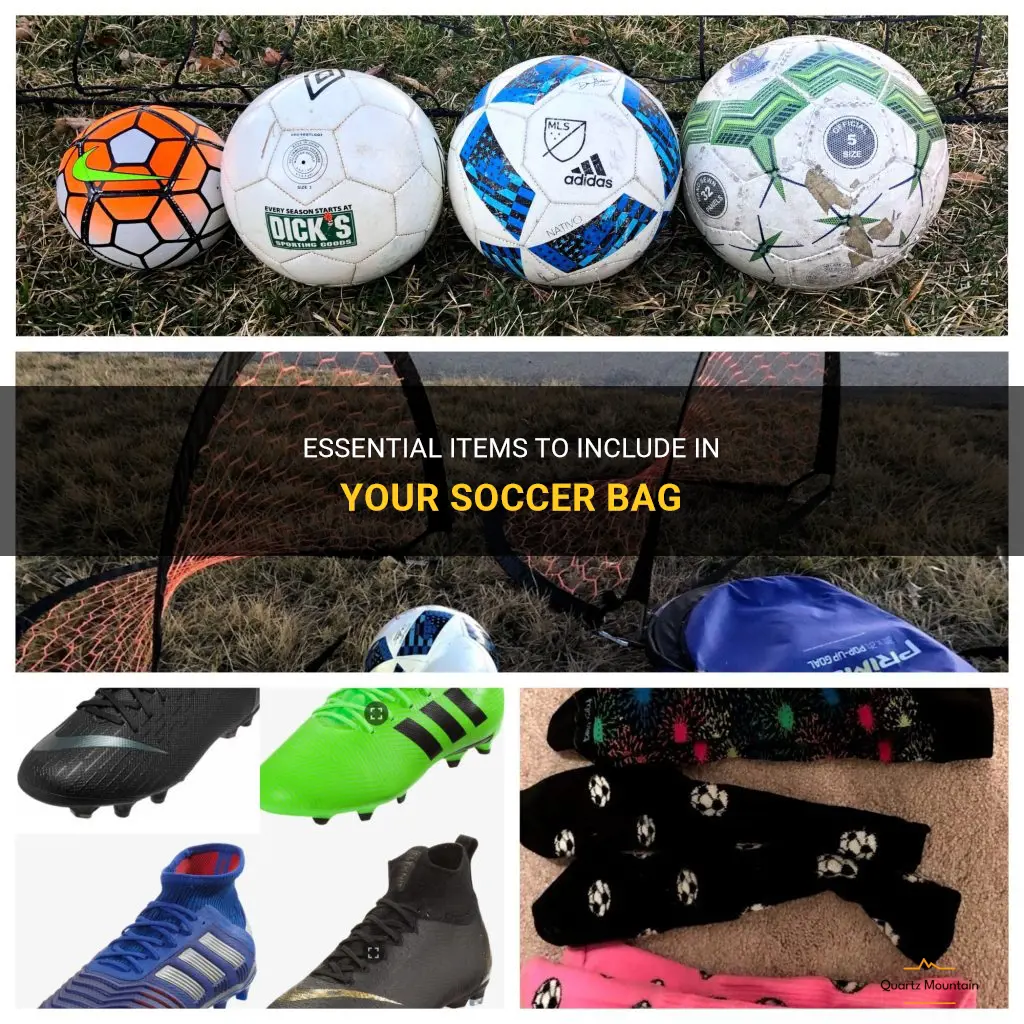
If you're a soccer player, you know that the game requires more than just skill and determination. It also requires preparation and the right equipment. One crucial aspect of being prepared on the field is having a well-stocked soccer bag. Whether you're a beginner or a seasoned player, this article will outline the essential items that every soccer bag should contain. From the obvious necessities like a ball and cleats to the often overlooked items like first aid supplies and spare clothing, we'll cover it all. So, if you're ready to make sure you have everything you need for a successful game, keep reading to find out what to pack in your soccer bag.
What You'll Learn
- What essential items should be packed in a soccer bag for a game or practice?
- Are there any specific items or equipment that are required for certain positions or playing roles in soccer?
- Are there any personal items, such as extra clothes or snacks, that are recommended to have in a soccer bag?
- How should the soccer bag be organized to ensure easy access to all necessary items during a game or practice?
- Are there any safety or emergency items that should be included in a soccer bag, such as a first aid kit or emergency contact information?

What essential items should be packed in a soccer bag for a game or practice?
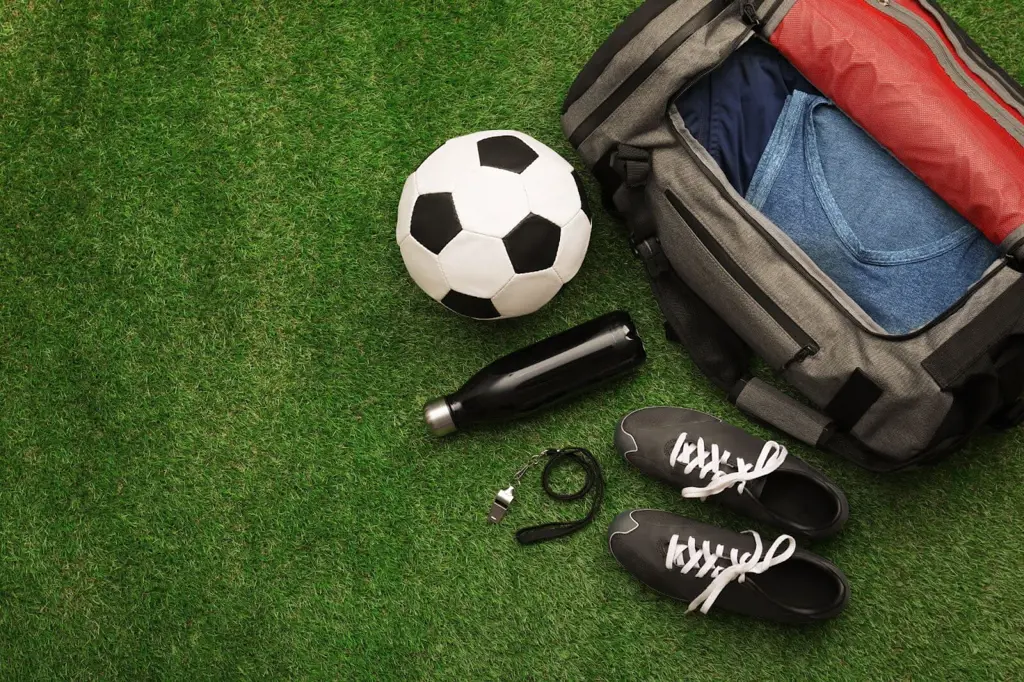
If you are a soccer player, it is important to have all the necessary equipment and essentials packed in your soccer bag for a game or practice. Your soccer bag should be filled with items that will help you to perform your best on the field. Here are some essential items that should be included in your soccer bag:
- Soccer cleats: A good pair of soccer cleats is essential for playing on grass or turf. Make sure they fit well and are comfortable to wear.
- Shin guards: Protecting your shins is crucial in soccer, as they can easily get injured during tackles or accidental collisions. Invest in a pair of quality shin guards to protect yourself.
- Socks: Pack multiple pairs of soccer socks, as they tend to get wet and sweaty during practices or games. It's important to have clean and dry socks to prevent blisters and discomfort.
- Jersey and shorts: Pack your team's uniform, including the jersey and shorts. Make sure they are clean and ready to wear for the game or practice.
- Water bottle: Staying hydrated is important during physical activities like soccer. Pack a water bottle to stay refreshed and hydrated throughout the game or practice.
- Towel: Bring a towel to wipe off sweat during breaks or after the game. It's also useful for wiping off dirt and grass stains from your body and cleats.
- Extra clothes: Pack a change of clothes in case your uniform gets dirty or wet during the game or practice. It's always good to have spare clothes to change into after the game.
- First Aid kit: Accidents and injuries can happen on the field. Pack a small first aid kit with essentials like bandages, antiseptic wipes, and pain relievers for any minor injuries.
- Snacks: It's important to fuel your body with energy before, during, and after the game or practice. Pack some healthy snacks like granola bars, fruits, or nuts to keep your energy levels up.
- Personal hygiene items: Pack some personal hygiene items like deodorant, hand sanitizer, and wet wipes to freshen up after the game or practice.
- Extra equipment: Depending on your position or personal preference, you may want to pack some additional equipment like goalkeeper gloves, headbands, or wristbands.
Remember, it's important to pack your soccer bag well in advance of the game or practice. Check that you have all the necessary items packed and make sure they are in good condition. Having a well-prepared soccer bag will not only help you perform your best on the field but also give you peace of mind knowing that you are prepared for any situation.
Essential Items to Pack for a Romantic Honeymoon in the Bahamas
You may want to see also

Are there any specific items or equipment that are required for certain positions or playing roles in soccer?
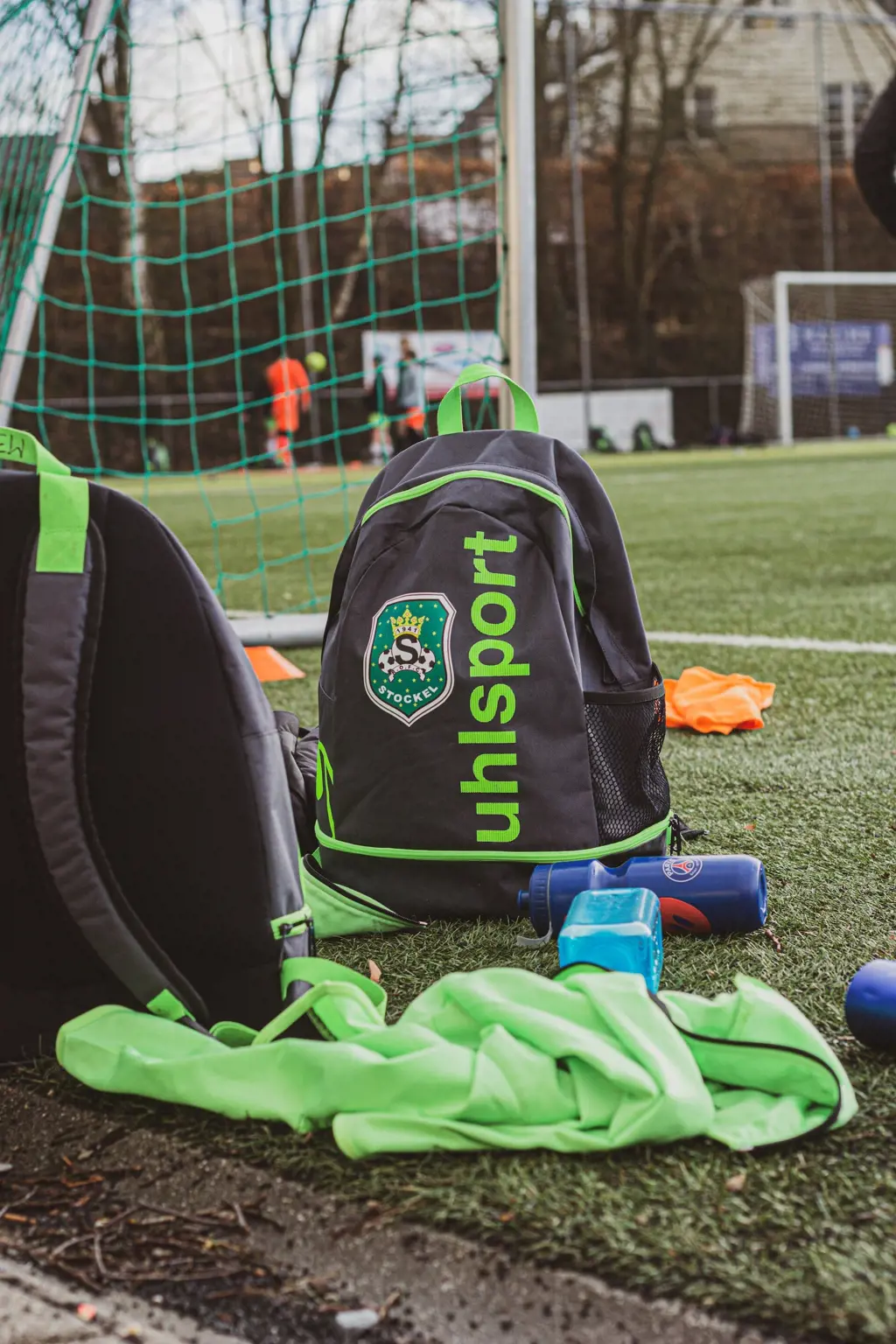
Soccer is a popular sport played by millions of people around the world. It is an intense and physically demanding game that requires specific items and equipment for certain positions or playing roles.
One of the most important pieces of equipment for soccer players is the soccer ball. It is the central focus of the game and is used to score goals. The size and weight of the ball may vary depending on the age and level of the players. For example, younger players may use a smaller ball that is easier to handle and control, while professional players use a regulation size ball.
Another essential item for soccer players is the appropriate footwear. Soccer cleats or boots are designed to provide traction and grip on the grass or turf. They have specialized studs or blades on the sole that help the player maintain their balance and maneuverability on the field. The type of cleats may also vary depending on the playing surface. For example, players may use cleats with longer studs for wet or muddy conditions and shorter studs for dry or artificial turf.
Goalkeepers have specific equipment that is unique to their position. They wear gloves to protect their hands and provide better grip on the ball. Goalkeeper gloves are padded to reduce the impact of saves and improve catching and ball handling abilities. The gloves may also have special features such as finger spines for added support and protection.
Field players may also use additional items such as shin guards to protect their shins from injury. These guards are typically made of lightweight materials such as plastic and are worn under the socks. They provide an extra layer of protection against kicks and tackles. Additionally, some players may choose to wear ankle braces or supports to prevent injuries and provide extra stability.
In terms of clothing, soccer players typically wear a jersey or shirt, shorts, and socks. The jersey is usually made of breathable and moisture-wicking material to keep the players cool and comfortable during the game. The shorts are designed for freedom of movement, and the socks are typically long to cover the shin guards.
Certain positions or playing roles may require additional specialized equipment. For example, midfielders and forwards may wear arm sleeves to protect their arms from cuts and abrasions during tackles or falls. Defenders may wear padded undershirts or compression gear to reduce the impact of collisions with opponents. These additional items are not mandatory but can provide added protection and comfort for players in specific positions.
In conclusion, soccer players require specific items and equipment for certain positions or playing roles. The soccer ball, footwear, gloves, shin guards, and clothing are essential for all players. However, goalkeepers have additional equipment such as gloves, while field players may use items like shin guards, ankle braces, arm sleeves, or padded undershirts. These items are designed to protect players from injuries and provide them with the necessary tools to excel in their respective positions.
Essential Items to Pack for Your Big Island Adventure
You may want to see also

Are there any personal items, such as extra clothes or snacks, that are recommended to have in a soccer bag?
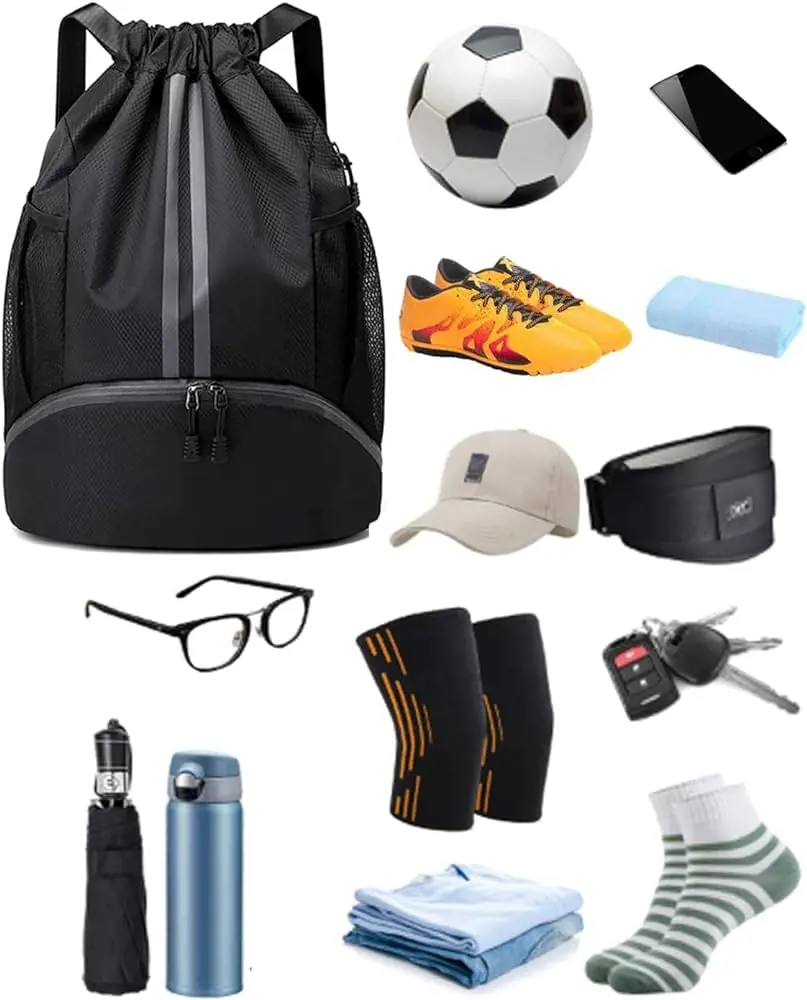
When it comes to soccer, it's not just about having the right gear and equipment. It's also important to have some personal items in your soccer bag to ensure you're prepared for any situation on and off the field. Here are some recommendations for personal items to have in your soccer bag:
- Extra clothes: It's always a good idea to have an extra set of clothes in case you get wet or sweaty during a game or practice. This can include an extra pair of socks, a t-shirt, and shorts. Having dry clothes to change into can help prevent any discomfort or chafing that may occur from wearing wet clothes.
- Towel: A towel is essential for wiping off sweat or dampness during a game or practice. It can also be used to wipe off any dirt or mud that may have accumulated on your gear. A small, compact towel is ideal for easy storage in your soccer bag.
- Snacks: Soccer is a physically demanding sport, and it's important to keep your energy levels up during long games or intense practices. Having some snacks in your bag can provide you with a quick source of fuel to keep you going. Healthy options such as energy bars, nuts, or dried fruits are recommended.
- Water bottle: Staying hydrated is key to performing at your best on the soccer field. Having a reusable water bottle in your bag ensures you have access to water whenever you need it. It's important to drink water before, during, and after games or practices to avoid dehydration.
- Personal hygiene items: Soccer can be a sweaty sport, so having some personal hygiene items in your bag can help you feel fresh and clean. This can include items such as deodorant, wet wipes, and hand sanitizer. It's important to take care of your personal hygiene to prevent any unpleasant odors or skin irritations.
- First aid kit: Accidents and injuries can happen during soccer games or practices. Having a basic first aid kit in your bag allows you to quickly treat minor cuts or bruises. It should include items such as adhesive bandages, antiseptic wipes, and a small pair of scissors. It's important to know how to use these items properly and seek medical attention for any serious injuries.
These are just a few of the personal items that are recommended to have in your soccer bag. It's important to personalize your soccer bag based on your specific needs and preferences. Remember, being prepared both physically and mentally can enhance your performance on the soccer field.
Essential Items to Pack for Independent Travel
You may want to see also

How should the soccer bag be organized to ensure easy access to all necessary items during a game or practice?
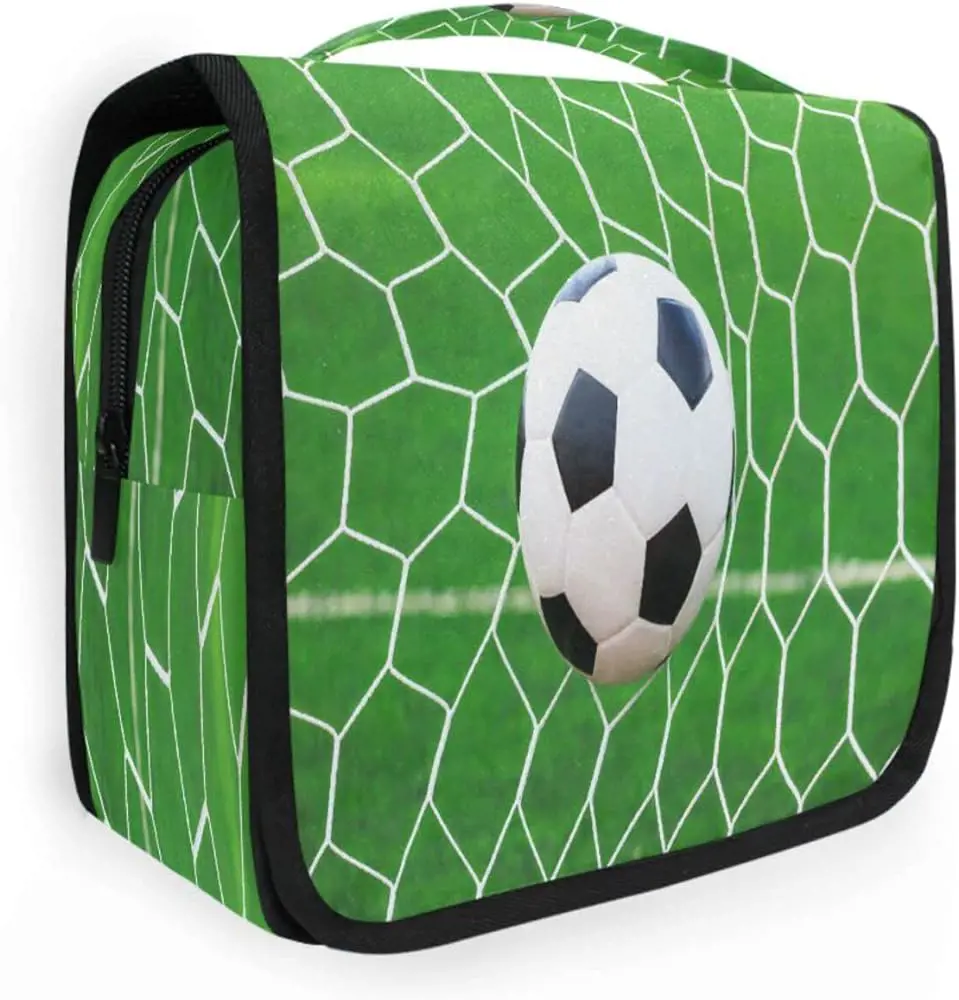
Organizing your soccer bag in a systematic and efficient way can greatly enhance your overall soccer experience. Having easy access to all necessary items during a game or practice can save you time and ensure that you are properly equipped to perform at your best. In this article, we will explore some practical tips on how to organize your soccer bag for optimal functionality.
- Categorize your items: Start by categorizing your items into different groups. For example, you can have separate sections for your playing gear, such as your jersey, shorts, and socks. Another section can be designated for your personal belongings, such as your wallet or phone. By categorizing your items, you can easily locate what you need without having to rummage through the entire bag.
- Utilize compartments and pockets: Many soccer bags come with built-in compartments and pockets. Take advantage of these features to further organize your items. For example, you can use a separate compartment for your cleats, keeping them away from your clean clothes or electronics. Pockets can be used for storing small items like your keys or energy bars.
- Prioritize accessibility: When packing your soccer bag, consider the frequency of use for each item. Items that you will need to access frequently, such as your water bottle or shin guards, should be placed in easily accessible pockets or compartments. This way, you won't waste time searching for them during a game or practice.
- Keep it clean: A clean soccer bag not only looks better but also makes it easier to find what you need. Regularly empty your bag and remove any dirt or debris that may have accumulated. Clean your bag with a damp cloth or sponge to maintain its condition and prevent any odors from developing.
- Pack smartly: When packing your soccer bag, be mindful of the weight distribution. Place heavier items at the bottom to prevent the bag from toppling over. Additionally, consider using small organizers or packing cubes to separate different items within your bag. This will help to prevent any potential damage or misplacement of items.
- Create a checklist: To ensure that you have all the necessary items, create a checklist. This can include items like your playing gear, extra clothes, water bottle, snacks, first aid kit, and any other personal items you may need. Check off each item as you pack it into your bag to avoid any last-minute surprises.
- Customize your organization system: Everyone's needs and preferences may vary, so feel free to customize your organization system to suit your specific requirements. Experiment with different layouts and compartments until you find a system that works best for you.
In conclusion, by organizing your soccer bag in a strategic and efficient manner, you can ensure easy access to all necessary items during a game or practice. Categorizing your items, utilizing compartments and pockets, prioritizing accessibility, keeping your bag clean, packing smartly, creating a checklist, and customizing your organization system are all effective strategies to achieve this goal. Remember, a well-organized soccer bag can greatly enhance your overall soccer experience and improve your performance on the field.
Essential Items to Pack for a Successful VidCon Experience
You may want to see also

Are there any safety or emergency items that should be included in a soccer bag, such as a first aid kit or emergency contact information?
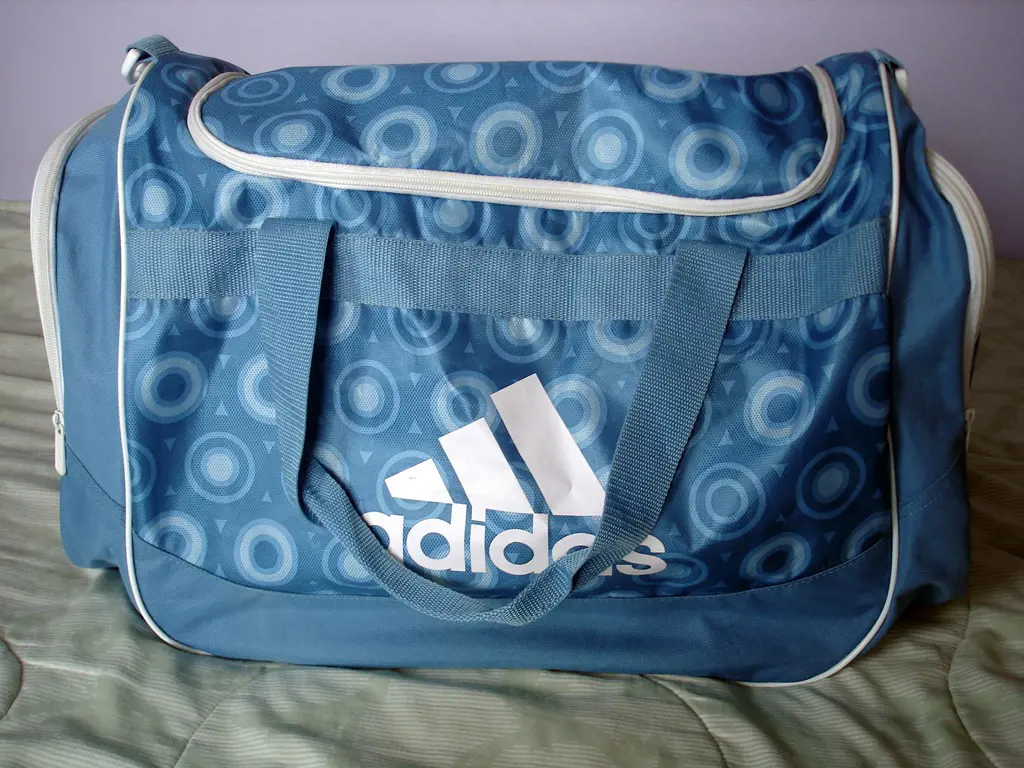
When participating in any sports activity, it is important to always be prepared for unexpected situations. Soccer is a high-energy sport that involves a lot of running, jumping, and physical contact, which means injuries can happen. It is essential to have a well-equipped soccer bag that includes safety and emergency items to ensure the well-being of players. In this article, we will discuss the items that should be included in a soccer bag for safety and emergencies.
First and foremost, a well-stocked first aid kit is a must-have for any soccer bag. The first aid kit should include essentials such as adhesive bandages, gauze pads, adhesive tape, antiseptic wipes, tweezers, and scissors. These items can come in handy for treating minor cuts, scrapes, blisters, and other injuries that may occur during a game or practice.
It is also a good idea to include instant cold packs in the soccer bag. These packs are a convenient way to quickly reduce swelling and relieve pain in case of sprains, strains, or other acute injuries. Instant cold packs do not require refrigeration and can be activated by simply squeezing or shaking them. Having a few of these packs in your soccer bag can make a significant difference in the immediate care of injuries.
Another essential item to include in the soccer bag is an emergency contact card or sheet. This card should have the player's name, emergency contact numbers, and any relevant medical information such as allergies or pre-existing conditions. In case of a serious injury or emergency, having this information readily available can help medical professionals provide appropriate treatment in a timely manner.
Additionally, it is crucial to include a personal safety item such as a mouthguard in the soccer bag. Mouthguards help protect the teeth, jaws, and soft tissues of the mouth from impact injuries. They are especially important for players who engage in physical contact or play in positions where collisions are more likely, such as goalkeepers or defenders.
In some cases, carrying an epinephrine auto-injector could be essential. If any player has a known severe allergy, such as an allergy to bee stings or certain foods, it is important for them to have their epinephrine auto-injector easily accessible in their soccer bag. This can mean the difference between life and death in case of an allergic reaction.
Lastly, it is a good idea to include any personal prescription medications that players may need in their soccer bag. Players with chronic medical conditions such as asthma or diabetes should always have their medications, inhalers, or glucose monitoring devices readily available during practices or games.
In conclusion, a soccer bag should always include safety and emergency items to ensure the well-being of players. A well-stocked first aid kit, instant cold packs, an emergency contact card, mouthguards, epinephrine auto-injectors, and personal prescription medications are all important items that should be included. By being prepared and having these items readily available, players can enjoy their soccer experience while knowing that they are well-equipped to handle any unexpected situations that may arise.
Packing Essentials for Your Trip to Yellowstone National Park
You may want to see also
Frequently asked questions
When packing your soccer bag, there are a few essentials that you should always have with you. Firstly, make sure to include a pair of soccer cleats or turf shoes, depending on the surface you'll be playing on. It's also important to pack extra socks in case you need to change during a game or practice. Additionally, bring a water bottle to stay hydrated, as well as any necessary protective gear, such as shin guards and a mouthguard. Don't forget to pack a towel or small towel to wipe off sweat or clean your cleats after playing.
It's always a good idea to have an extra jersey and shorts in your soccer bag, especially if you have multiple games or practices in one day. Accidents happen, and you never know when your jersey might get torn or stained. Having a spare set of clothes ensures that you'll always have a clean and presentable uniform to wear. Just make sure to pack them in a separate plastic bag to keep them clean and organized.
While most soccer teams should have a first aid kit available, it's a good idea to have some personal first aid supplies in your soccer bag as well. Pack some adhesive bandages, athletic tape, and any necessary medications, such as pain relief or allergy medicine. It's always better to be prepared for minor injuries or health issues that may arise during games or practices.
Keeping your soccer bag organized is essential, especially when you have multiple items to pack. One way to keep things organized is to use smaller bags or pouches to group similar items together. For example, you can have a bag for your cleats and socks, another one for your protective gear, and a separate pouch for your personal items like your phone, keys, and wallet. Additionally, labeling your bags or using transparent pouches can help you quickly find what you need without having to rummage through your entire soccer bag.







